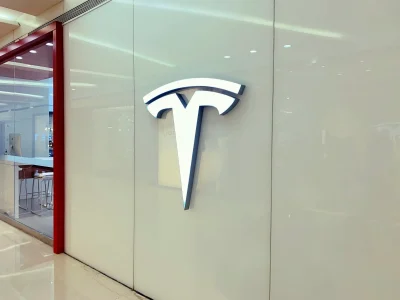Tesla (NASDAQ: TSLA) released its 2023 Impact Report, reiterating its founding mission to “accelerate the world’s transition to sustainable energy.” To accomplish this, the company said its goal is for each product “to be far superior to its fossil fuel alternatives in every way.”
The electric vehicle (EV) giant previously worked towards delivering 20 million vehicles by the end of this decade. Two years ago, CEO Elon Musk boldly stated that Tesla would sell twice as many vehicles as Toyota, the world’s largest automaker.
The goal posts have now been moved.
Tesla shifts focus
The company’s 2022 Impact Report cited Musk’s original vision. To achieve the 20-million sales target, he said at the time that Tesla would need to make its products “even more accessible.”
Tesla changed course and omitted this ambitious goal from the latest Impact Report.
Why does this matter? It signals a shift in focus. Tesla is tempering its EVs, moving from mass-market vehicle production to autonomous driving tech and robo-taxis.
This also explains why Tesla abandoned its plans to produce a budget model. The pivot reflects a broader strategic realignment as the company moves ahead with its robotaxi project.
EVs versus robo-taxis and robots
During the Viva Technology event, hosted annually in Paris, Musk highlighted the importance of robo-taxis and humanoid robot, Optimus.
He said both projects were “incredibly profound” for Tesla’s future.
The company will host a launch event for the robo-taxi, referred to as ‘the Cybercab,’ on August 8. The announcement was made during Tesla’s Q1 earnings call, but Musk didn’t add any other details, simply saying, “I think we’ve said all we will on that front.”
Musk also joked about being an alien. “I keep telling people I’m an alien, but nobody believes me.” On a serious note, he says if he ever finds evidence of alien life on Earth, he’ll post it on the X platform.
2023 Impact Report highlights
Tesla highlights several key factors in the latest edition, including sustainability, production, and community engagement.
Sustainability:
Tesla aims to accelerate the transition to sustainable energy through zero-emission vehicles and energy products. This includes a focus on governance, product safety, and environmental impact.
Product impact:
As per the report, Tesla’s products helped customers avoid over 20 million metric tons of CO2 emissions in 2023. It’s the equivalent of approximately 50 billion miles driven by a combustion engine vehicle.
Growth and production:
The EV giant produced 1.8 million electric vehicles (EVs) globally in 2023.
Environmental strategy:
The focus this year is on reducing the carbon impact of its operations and products. This includes using renewable energy sources and improving manufacturing energy efficiency.
Water use and biodiversity:
Tesla is cutting water usage across its operations and is actively involved in restoring and improving ecological systems at its factory locations.
Circular economy and recycling:
Recycling and responsible sourcing also gets a mention in the 2023 impact report, specifically with regards to battery materials and support a circular economy.
Education and community engagement:
Tesla says it wants to prepare its workforce for a sustainable future, while also increasing public engagement and education regarding sustainability
About the author
Cheryl has contributed to various international publications, with a fervor for data and technology. She explores the intersection of emerging tech trends with logistics, focusing on how digital innovations are reshaping industries on a global scale. When she's not dissecting the latest developments in AI-driven innovation and digital solutions, Cheryl can be found gaming, kickboxing, or navigating the novel niches of consumer gadgetry.












